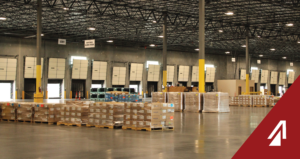If you are a decision-maker for your company, you have probably looked at your vendors and asked yourself, “Am I getting the best value?” You may have just come through a customer-service ordeal or you could be on the edge of a new venture, and you need to decide if it is time to find your company a new provider. But, you are not sure. How do you know it is time?
In logistics, the questions are exactly the same. You may have a relationship with a 3PL but need to find a better option going forward. You may have hit the proverbial “7-year itch” and just need to know you are getting the best service possible. So – how can you know it is time to make the switch to a new 3PL? Take a look at some of the most common scenarios below.
Scalability Issues
One of the most common times a buyer needs to re-evaluate their 3PL is when that 3PL has scalability issues. Scalability issues can come in a variety of different ways including:
- Not being able to handle changes in your volume order- this could be due to seasonal demands or your sudden increase in size and your 3PL provider not being able to match. You need a 3PL that can meet your shipping demand when you need them.
- Not having the right locations – you may have a global operation, but your 3PL may be limited to a specific region. You need a 3PL that can offer service wherever you do business and has the facility network to create efficiencies in your supply chain.
- Not having compatible technology. Your 3PL should have order management software available for you to seamlessly complete your shipments, as well as sophisticated networks for communication, visibility, and efficiency. This means your 3PL needs to have a transportation management system (TMS), warehouse management system (WMS), inventory management system (IMS), and other state-of-the-art technologies like EDI, online tracking, AI, and more that you require for interaction and control of your freight.
No matter what scalability issue your 3PL has, they almost all add up to one thing – failures. That disrupts your supply chain and burdens your customer. Continued failure is the next common reason to switch 3PLs.
Failures
Failures often occur when there is a breakdown in communication. Something happens, leaving carriers or 3PLs unable to make their commitment, and then they do not tell you about it in time. Having multiple failures can result from 3PLs not being qualified to handle your freight due to scalability issues (like we mentioned earlier), from overlooking or ignoring your KPIs, or by simply from not understanding the project scope laid out before them.
Other communication failures happen when you cannot communicate due to rotating points of contact. That is why proper customer support is needed. You need a single point of contact that you can communicate with directly to have visibility of your freight and to prevent failures as soon as possible.
Another common failure is lost or damaged freight. According to Packaging Digest, “As much as 11% of unit loads arriving at a distribution center have some level of case damage.” That figure can severely cut into your bottom line; and to reduce freight damages, you might need to change providers.
Before you abandon your 3PL due to failure, have corrective action measures in place. Many customers have compensation requirements, or require commitments to continual improvement or Kaizen events. However, if these standards are in place, and failures still occur. It might be time to find a new 3PL.
Maintain Market Norms
Every so often, it might be a good idea to confirm you are getting the best quality service by “testing the waters” and seeing what other 3PL providers have to offer you. Many companies will do this at the beginning of either a calendar or fiscal year. Others will do this before offering a new product or opening new facilities.
You might be comfortable with your current 3PL, but you could be missing out on additional savings or services that others may offer – simply because you did not know they were available. So, when the time feels right, it might be advantageous to create an RFI and see what other vendors can bring. You might find your current provider is the best, but you might see it is time to change.
Cut Costs
One of the biggest concerns for companies is cutting costs, and one of your largest expenses is your supply chain. If your 3PL is continually raising rates or not finding savings, it might be time to find a new provider.
It is understandable that market price fluctuations are bound to happen. Driver shortages, peak seasons, or natural disasters often put a pinch on supply, causing rates to go up. But, if your 3PL is not able to overcome these prices and let them become the norm, rather than the exception, you might need to find a new provider.
Great 3PLs will have teams of engineers and others to monitor your supply chain and constantly find ways to innovate or create efficiencies. Whether by improving routes, modes, carriers, or other factors like assessorial costs or damages, your 3PL should be helping you reduce your freight spend. If they cannot, it might be time to find a new one.
How to Transition Smoothly
Now, should you find yourself or your company switching 3PLs, it is important to not immediately fall into the same mistakes and have buyer’s remorse. So, there are a few things you can do to help ease the transition.
- Have clearly defined and identified processes and expectations for your 3PL. Do not leave your expectations uncommunicated or your 3PL will not be able to give you what you want. Have KPIs that are clearly written and clearly defined so both you and your 3PL can review them to ensure your needs are met.
- Define your project scope up front. 3PLs will not be able to provide proper service for a moving goalpost. Explain your project up front so your 3PL can be honest and create a solution that will fit your needs.
- Create a qualified transition team. You will need a varied team of experienced decision-makers to ensure each of your requirements are managed properly and are on schedule.
- Monitor the implementation closely. Track your progress and your budget, effectively communicate with necessary stakeholders, and have contingencies prepared in the event of failure to launch.
- Clearly communicate with stakeholders outside of your company that will be affected by your change. These could be stakeholders like your shippers or your customers that will need to be aware of the change in service so they can plan accordingly.
Overall, changing your supply chain by switching your 3PL can be a daunting task. Knowing when it is necessary is a large factor in making your decision. Hopefully by seeing these common scenarios, you will have a good idea of when it is time to make the switch.



